Lord Shiva, a revered deity in Hindu mythology, is a cornerstone of the Trimurti, alongside Brahma and Vishnu. He is the destroyer and transformer, holding a unique position in the cosmic order. His ascetic nature and immense power evoke awe and reverence. Ancient scriptures tell of his strength, wisdom, and compassion, portraying him as a fierce warrior and benevolent protector. The question of whether anyone can defeat Lord Shiva takes us into the heart of Hindu mythology, where divine powers and cosmic battles are explored.
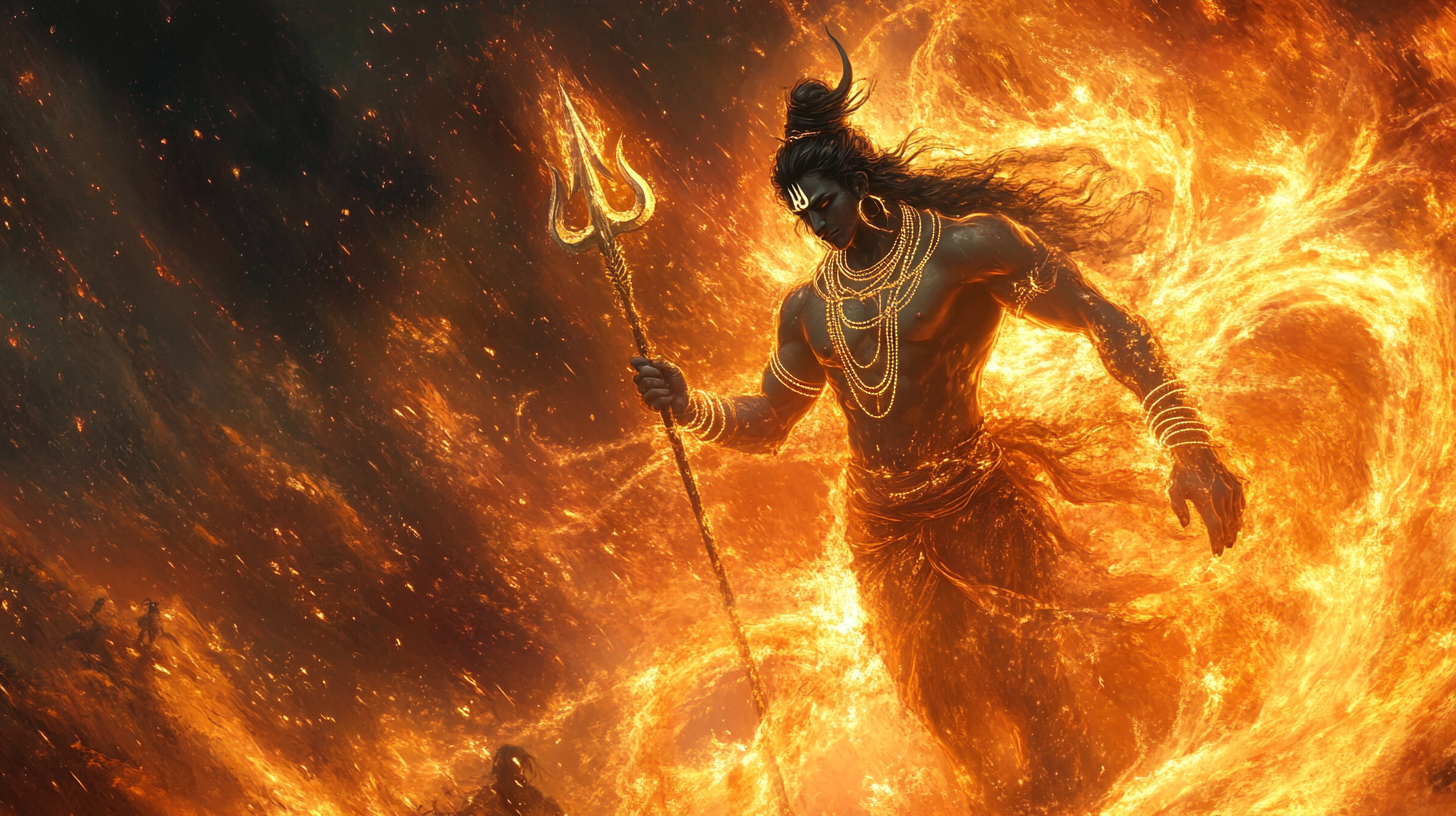
Shiva’s Invincibility
In Hindu mythology, Lord Shiva is a symbol of invincibility, his power unmatched and his presence eternal. The scriptures, such as the Shiva Purana, depict him as the ultimate reality, the Adi Dev, the first among gods. He transcends all forms of defeat, as described in the Rudra Samhita (Chapter 6). Shiva is beyond time, space, and mortal limitations, the source of all creation and destruction, balancing the universe.
The tale of the Samudra Manthan, the churning of the cosmic ocean, showcases Shiva’s invincibility. When gods and demons churned the ocean for immortality, they unleashed treasures and horrors. Halahala, a deadly poison, emerged, threatening to destroy all creation.
In this moment of despair, the gods turned to Lord Shiva, the only one who could save the universe. Shiva drank the poison, turning his throat blue, earning him the name Neelkantha. His immense power and compassion contained the poison's destructive force, saving the world. This act demonstrated his unparalleled strength and willingness to bear suffering for others.
Shiva’s role as Mahadeva, the greatest of gods, is emphasized in his control over destruction and creation. His destruction is a transformation, dissolving the old to make way for the new, ensuring life's cycle continues. His power is both physical and spiritual, rooted in deep meditation and ascetic practices.
Stories of Shiva’s War
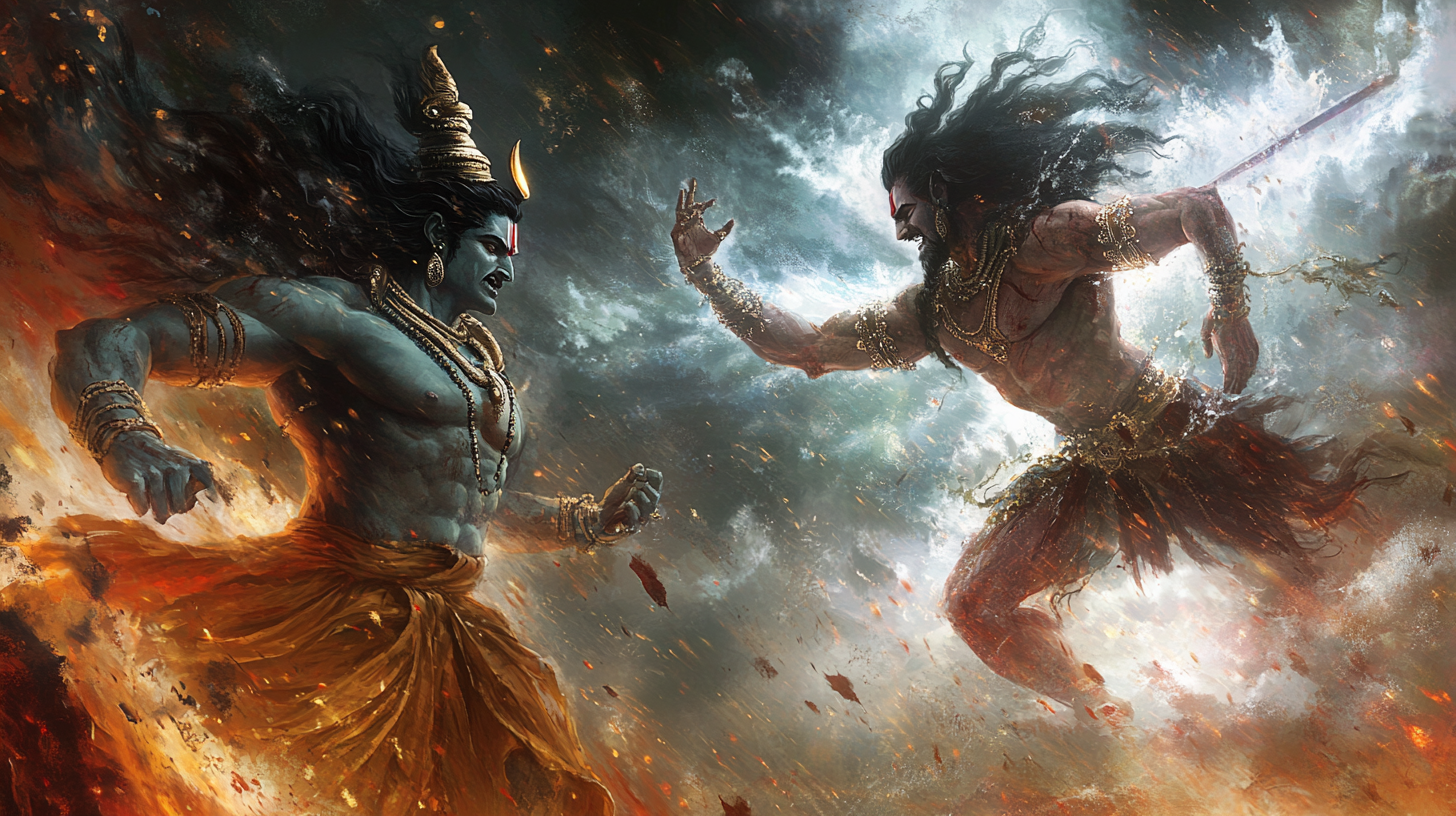
Shiva and Andhaka (Shiva Purana, Koti Rudra Samhita)
The Shiva Purana, in the Koti Rudra Samhita, tells the tale of Andhaka, a demon who challenged Lord Shiva. This story highlights Shiva’s invincibility and the dangers of unchecked pride and desire.
Andhaka, born to sage Kashyapa and his wife Diti, was granted a boon making him nearly invincible. He could not be killed by any weapon, nor defeated by gods or demons. His arrogance grew, believing himself unstoppable. He aimed to conquer the heavens, seeking to defeat even the gods.
Andhaka, driven by his desire for Parvati, Shiva's consort, set out to abduct her. He believed no one could stop him. His army of demons marched towards Mount Kailash, Shiva's home. The earth trembled as Andhaka approached, blinded by his arrogance.
Shiva warned Andhaka of his folly, but he refused to listen. Andhaka attacked Shiva, unleashing his full might. The battle was epic, with Andhaka's power matched by Shiva's divine strength.
Shiva realized conventional weapons wouldn't defeat Andhaka. He used his Trishul to pierce Andhaka's heart. Yet, Andhaka's story continued, bound by his arrogance and desire.
Shiva transformed Andhaka into a Bhairava, a fierce form of himself. This act showed Shiva's compassion and power to transform darkness into meaning.
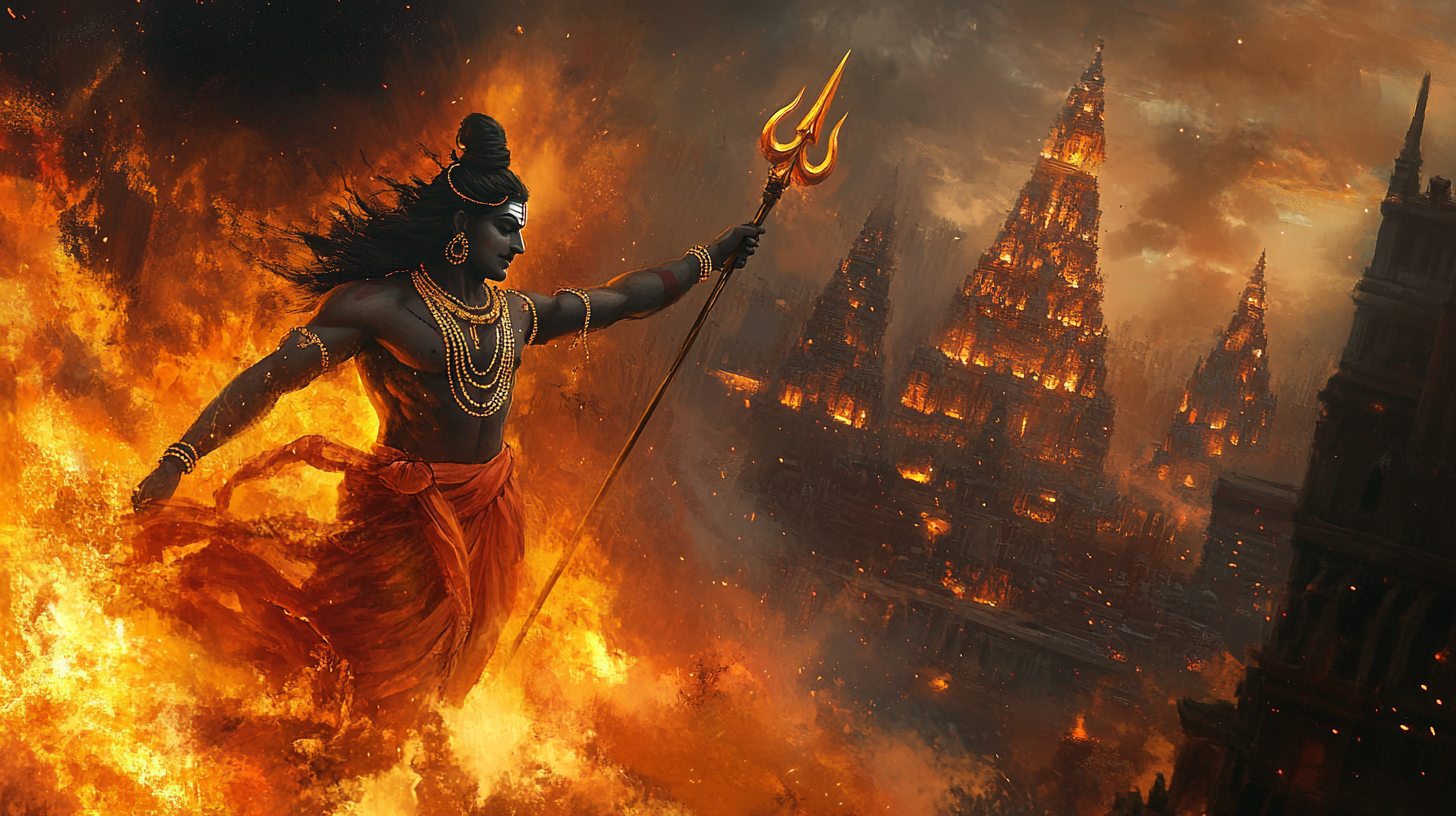
Shiva and Tripurasura (Shiva Purana, Uma Samhita)
The Shiva Purana, in the Uma Samhita, tells the tale of Tripurasura. It highlights Shiva's role as destroyer of evil and protector of balance. Shiva effortlessly annihilates formidable forces, demonstrating his unmatched power.
Three demon brothers—Tarakaksha, Vidyunmali, and Kamalaksha—sought immortality from Brahma. Brahma granted them a boon, but they cleverly asked for indestructible cities. These cities, known as Tripura, became strongholds of evil, terrorizing the universe.
The gods, unable to defeat the Tripurasuras, sought Shiva's help. Shiva, the destroyer, agreed to intervene. He prepared for battle with precision, using a divine chariot and the Himalayas as his bow. The universe watched as Shiva prepared to face the Tripurasuras.
When the three cities aligned, Shiva drew his bow and released the arrow. In a single, blinding moment, the arrow pierced through all three cities, reducing them to ashes. The demons, despite their boon, could not withstand the sheer power of Shiva’s divine weapon. The universe rejoiced as the tyranny of the Tripurasuras came to an end.
This story of Shiva and Tripurasura is not just a tale of destruction but also a profound lesson in humility and the inevitability of cosmic justice. The Tripurasuras, despite their cleverness and power, fell because of their arrogance and disregard for dharma. Shiva, on the other hand, demonstrated that true power lies in wisdom, precision, and the ability to uphold balance.
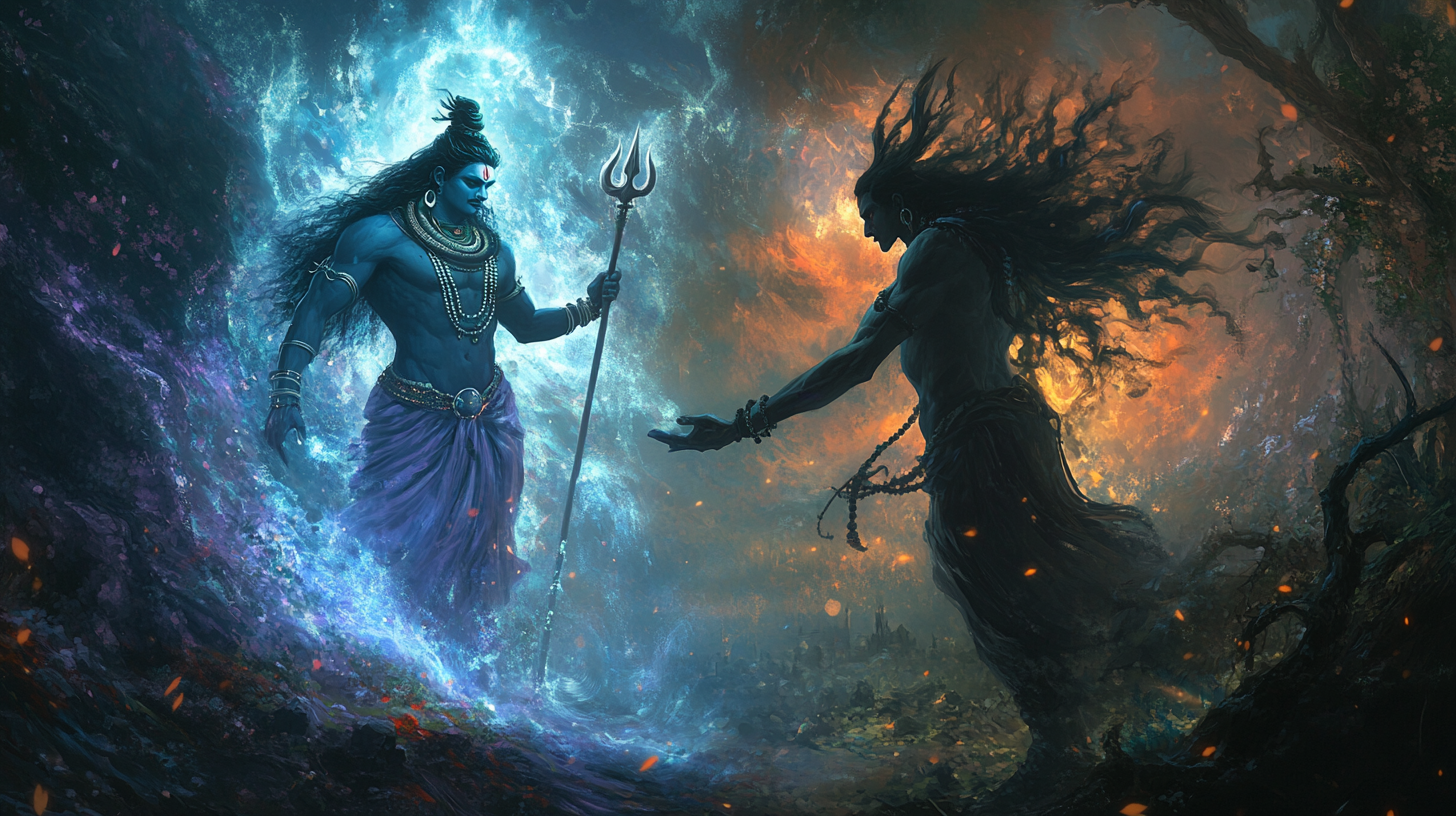
Shiva and Yama (Katha Upanishad)
In the Katha Upanishad, a profound and timeless story unfolds, showing Lord Shiva's supremacy over even the god of death, Yama. This tale revolves around Markandeya, a young and devoted follower of Shiva, whose unwavering faith and devotion led to a divine intervention that defied the very laws of life and death.
Markandeya was born to the sage Mrikandu and his wife Marudvati. His parents had prayed to Shiva for a child, and the Lord granted them a choice: a son who would live a short but virtuous life or one who would live long but lack wisdom. Mrikandu chose the former, and Markandeya was born with a destined lifespan of only sixteen years.
As Markandeya grew, he became a devout worshipper of Shiva, spending his days in prayer and meditation. He was unaware of his fate until, on the eve of his sixteenth birthday, he overheard his parents grieving. Realizing his time was near, Markandeya turned to his beloved deity for solace. He went to a Shiva temple, embraced the Shiva Linga, and prayed with all his heart, chanting Shiva’s name fervently.
When the moment of his death arrived, Yama, the god of death, arrived to claim Markandeya’s soul. Yama, bound by his duty, threw his noose around the boy to take him to the underworld. But Markandeya clung to the Shiva Linga, his faith unshaken. As Yama’s noose tightened, something extraordinary happened. The Shiva Linga burst into flames, and from it emerged Lord Shiva himself, his eyes blazing with fury.
Shiva confronted Yama, his presence radiating divine power. With a single strike of his Trishul (trident), Shiva severed Yama’s noose and freed Markandeya. Yama, the mighty god of death, stood humbled before Shiva. He bowed to the Lord, acknowledging his supremacy. Shiva then declared that Markandeya, by his unwavering devotion, had earned the boon of immortality. From that day forward, Markandeya became known as Chiranjivi, the eternal one, who would live forever.
This story of Shiva and Yama is more than just a tale of divine intervention; it is a testament to the power of faith and devotion. Markandeya’s unwavering belief in Shiva saved him from the clutches of death, proving that true devotion can transcend even the most inevitable of fates. Shiva’s intervention also highlights his role as the protector of his devotees, a deity who stands above the natural order to safeguard those who seek refuge in him.
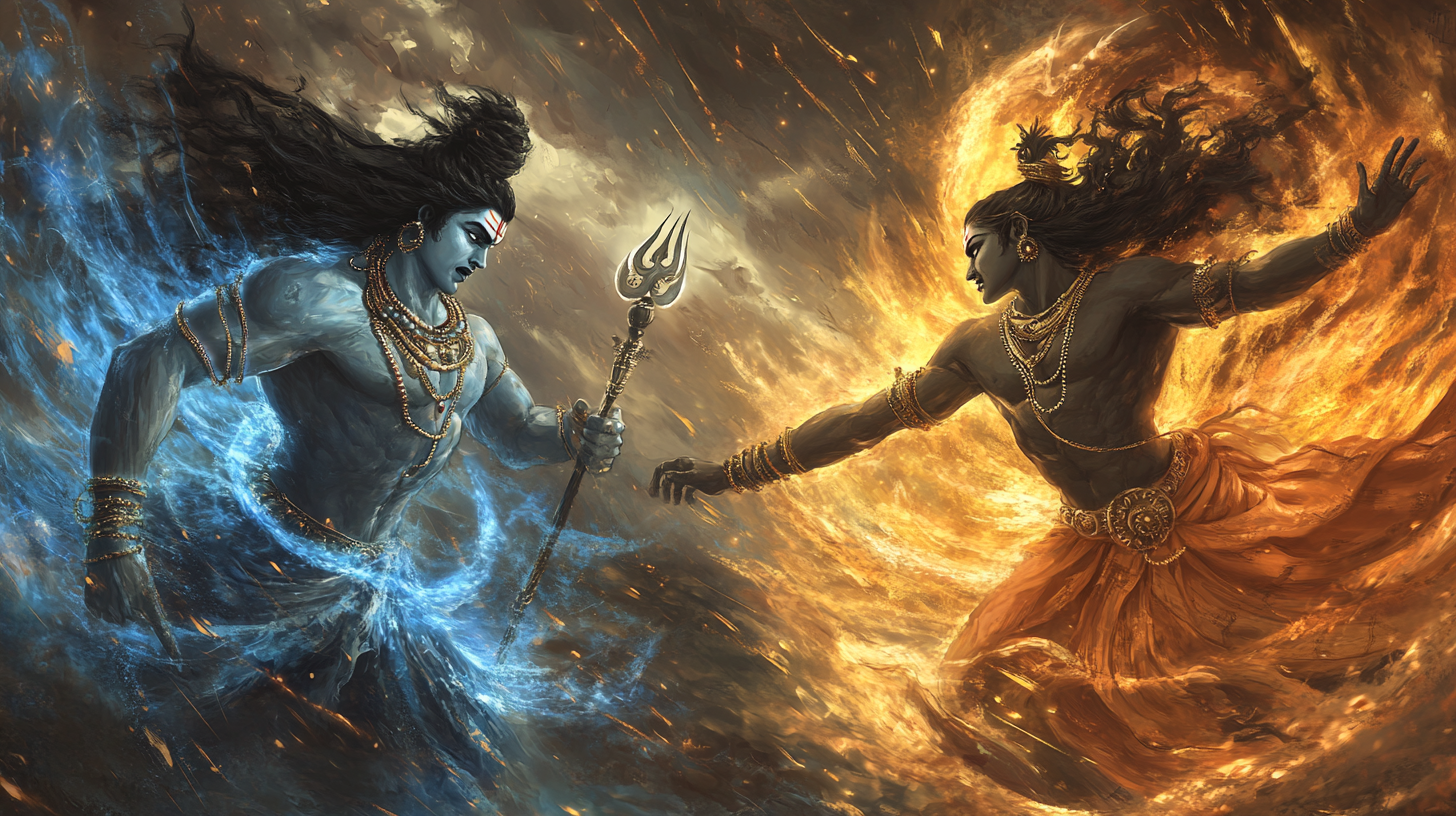
Shiva and Krishna War
The epic battle between Lord Shiva and Lord Krishna is a captivating tale in Hindu mythology. It centers around Banasura, an asura king and devoted follower of Shiva. Banasura, blessed with a thousand arms and Shiva’s protection, grew arrogant and caused chaos across the universe. His daughter, Usha, fell in love with Aniruddha, Krishna’s grandson, after a dream. They secretly married with the help of Chitralekha’s magical powers.
When Banasura discovered Aniruddha, he captured him, prompting Krishna to lead an army to Banasura’s kingdom. Shiva intervened to protect Banasura, leading to a divine battle between Shiva and Krishna. The battle was intense, with both deities using powerful weapons. Krishna used his Sudarshan Chakra to cut off Banasura’s arms, but Shiva shielded him. Krishna then tricked Shiva into sleep, allowing him to defeat Banasura. Shiva later awoke, pleading with Krishna to spare Banasura’s life, which Krishna granted, ending the conflict.

The Story of Charpatinath’s Battle with Lord Shiva
In Hindu mythology, Lord Shiva is revered as the most powerful deity. He is known for his immense strength, wisdom, and role as the destroyer and transformer of the universe. A lesser-known tale from the Navnath Bhaktisar (Chapter 39) tells of Lord Shiva being defeated by a sage named Charpatinath. This story highlights the power of intellect and devotion over divine might.
The story begins with Lord Indra insulting the great sage Narada Muni. Narada Muni sought revenge, taking Charpatinath to Indra’s heaven. There, they ate fruits and plucked flowers from the divine garden. The guards discovered this and tried to arrest Charpatinath, but Narada Muni vanished, leaving Charpatinath to face them alone.
The guards were no match for Charpatinath. He defeated them easily, showing his immense power. Lord Indra, realizing he couldn’t defeat Charpatinath, sent other gods to confront him. But they too were defeated by the sage.
Lord Indra then sought Shiva’s help to defeat Charpatinath. Shiva and his followers arrived to confront Charpatinath. But Charpatinath was not intimidated. He used a powerful technique called “Vatakarshana Vidya,” which rendered Shiva and his followers unconscious by stopping their breathing.
Pippalayan, another sage, intervened, rescuing Shiva and the other gods. This highlighted the power of wisdom and devotion over divine strength.
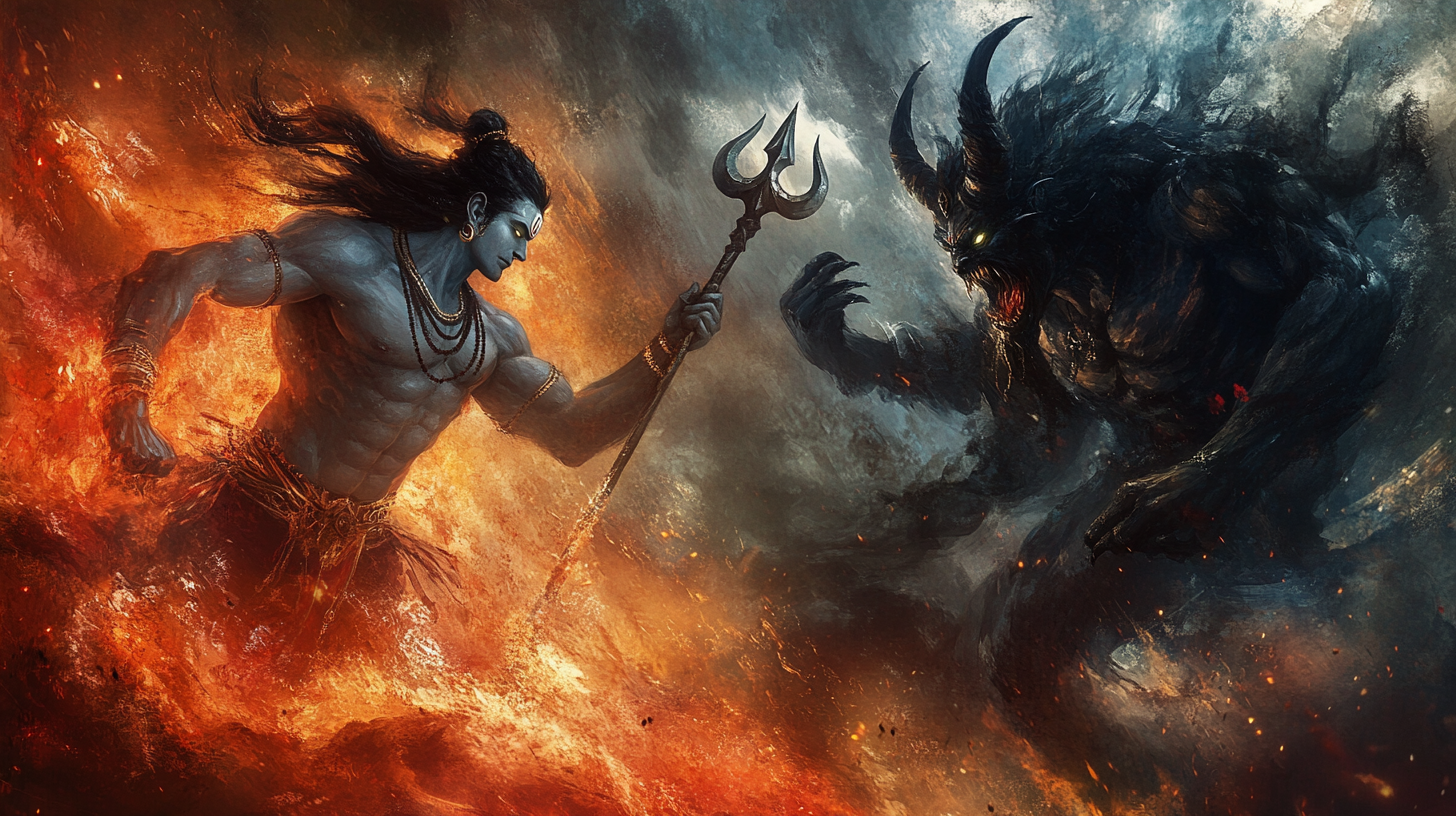
The Battle with Jalandhar
This tale, found in the Shiva Purana and Vishnu Purana, offers deep insights into power, arrogance, and the triumph of dharma.
Jalandhar's origin is as captivating as his tale. The Shiva Purana tells us he was born from Lord Shiva's third eye's radiant energy. This divine spark fell into the ocean, transforming into the mighty Jalandhar. His birth was a result of Shiva's wrath, making him a formidable foe destined to challenge the gods.
Jalandhar grew to become the king of the demons, ruling with an iron fist. His strength and intelligence made him a formidable adversary to the gods. He married Vrinda, the daughter of Kalnemi, and together they ruled the demonic realm. Jalandhar's ambition knew no bounds; he sought to conquer the heavens and the earth, challenging the very order of the universe.
The sage Narada Muni, known for his wisdom and foresight, cursed Jalandhar for his defiance against the divine order. This curse stripped Jalandhar of his invincibility and set the stage for his ultimate confrontation with Lord Shiva.
The climactic battle between Lord Shiva and Jalandhar is one of the most dramatic episodes in Hindu mythology. Jalandhar, despite his immense power, could not withstand the wrath of Lord Shiva. The Shiva Purana describes how Shiva's divine energy, the very source of Jalandhar's strength, ultimately led to his defeat. Shiva's third eye, the source of Jalandhar's birth, unleashed a blinding light that annihilated the demon king.
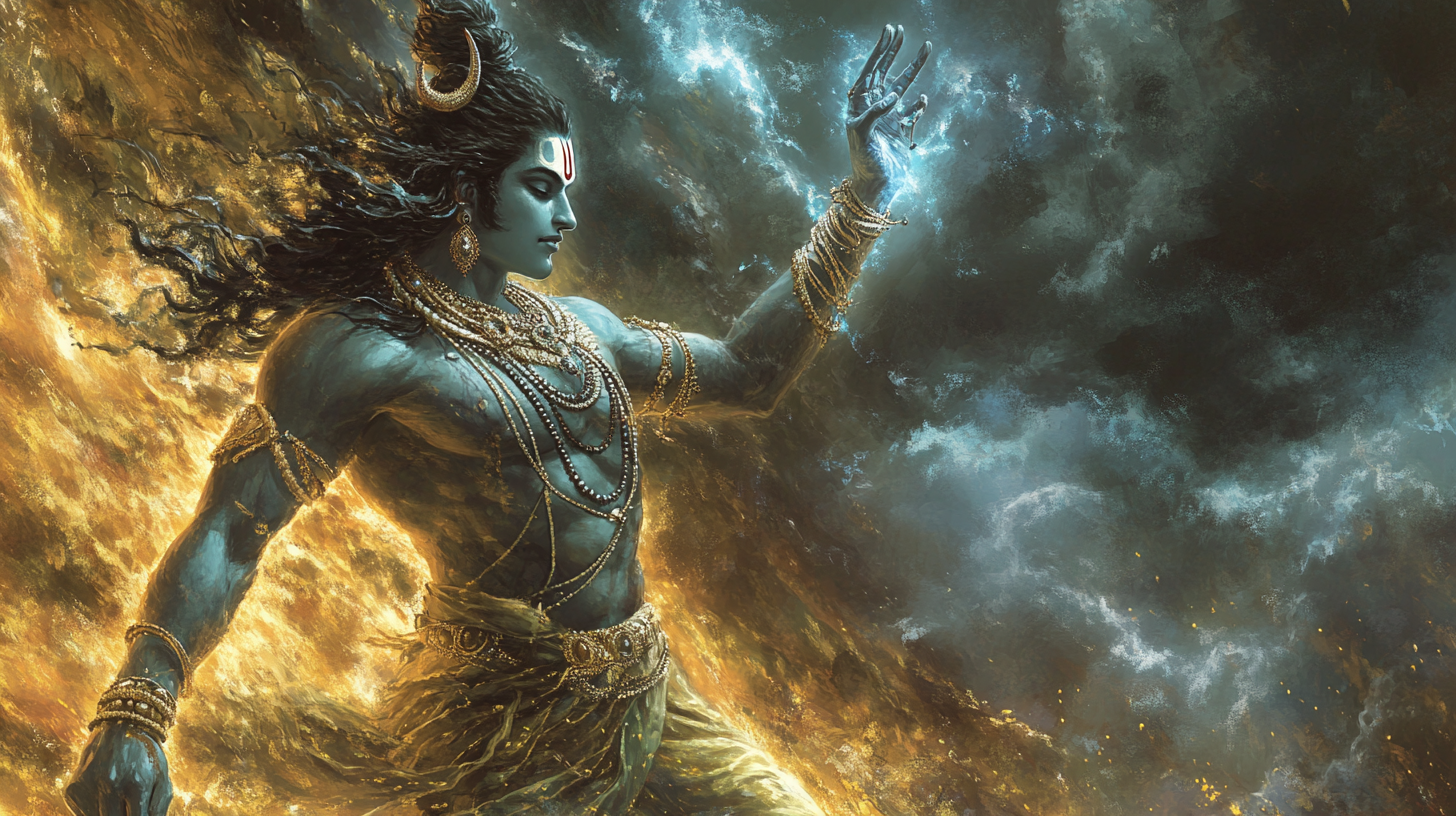
The Story of Lord Shiva and Bhasmasura
Once upon a time, there was a demon named Bhasmasura. Known for his cunning and ambition, Bhasmasura sought immense power to dominate the world. To achieve this, he decided to perform severe penance to win the favor of Lord Shiva. Bhasmasura collected ashes from funeral pyres and offered them to Shiva, earning him the name "Bhasmasura," which means "the demon of ashes" .
After years of devoted worship, Lord Shiva, impressed by Bhasmasura's dedication, appeared before him and granted him a boon. Bhasmasura, with a wicked grin, requested the power to turn anyone into ashes by simply touching their head. Despite the dangerous nature of this boon, Shiva, bound by his nature, granted it .
Empowered by his newfound ability, Bhasmasura became arrogant and began to wreak havoc. He roamed the earth, turning people into ashes with a mere touch. The gods, witnessing the chaos, were deeply concerned. They approached Lord Shiva, pleading for a solution. Yet, Shiva, having granted the boon, could not revoke it directly.
Sensing the danger, Lord Shiva pretended to flee, with Bhasmasura in hot pursuit. The gods watched helplessly as the demon chased Shiva. Lord Vishnu, observing the situation, decided to intervene. He transformed into Mohini, the enchanting and beautiful form of a woman, to distract Bhasmasura.
As Bhasmasura chased Shiva, he suddenly encountered Mohini. Captivated by her beauty, he forgot about his pursuit and was mesmerized by her presence. Mohini, with a sweet smile, began to dance. Her graceful movements were so enchanting that Bhasmasura couldn't help but imitate her.
During the dance, Mohini placed her hand on her head. Lost in the moment, Bhasmasura did the same. The moment his hand touched his head, flames erupted from his body, and he was instantly reduced to ashes. The gods sighed in relief, grateful for Vishnu's clever intervention.
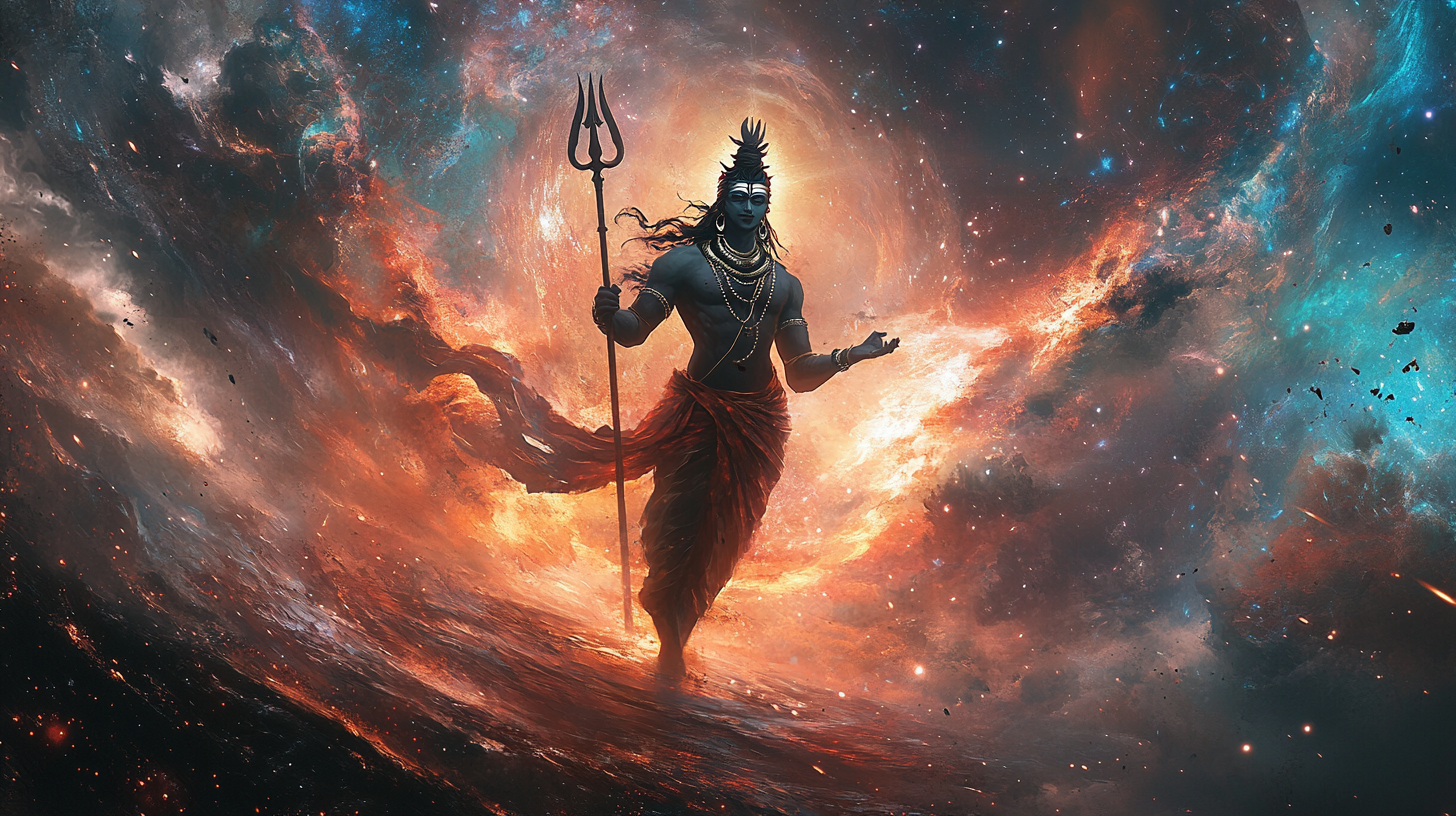
Conclusion
In conclusion, Lord Shiva stands as a symbol of invincibility and divine supremacy. His stories of mythical adversaries remind us of the eternal power that governs the universe. Whether seen as literal battles or metaphorical struggles, these tales inspire us to reflect on our own inner conflicts and the cyclical nature of existence. Shiva's unwavering strength, devotion, and boundless grace continue to captivate the hearts of millions. Exploring the legend of Lord Shiva not only deepens our understanding of Hinduism but also speaks of the eternal power that resides within ourselves
If you're a devotee looking to welcome Lord Shiva's blessings into your life, consider placing a Shiva idol in your car, home, office, or any sacred space. At Dev Tattva, we present a selection of exquisite Shiva idols, crafted with devotion and care. Each piece is designed to inspire and uplift, bringing the divine presence of Lord Shiva into your daily life.
Explore our collection of Shiva idols here: Shiva Idols | Dev Tattva
May Lord Shiva's blessings be with you always.
Har Har Mahadev …
Our latest content
Check out what's new in our company !
Stories of Shiva’s War